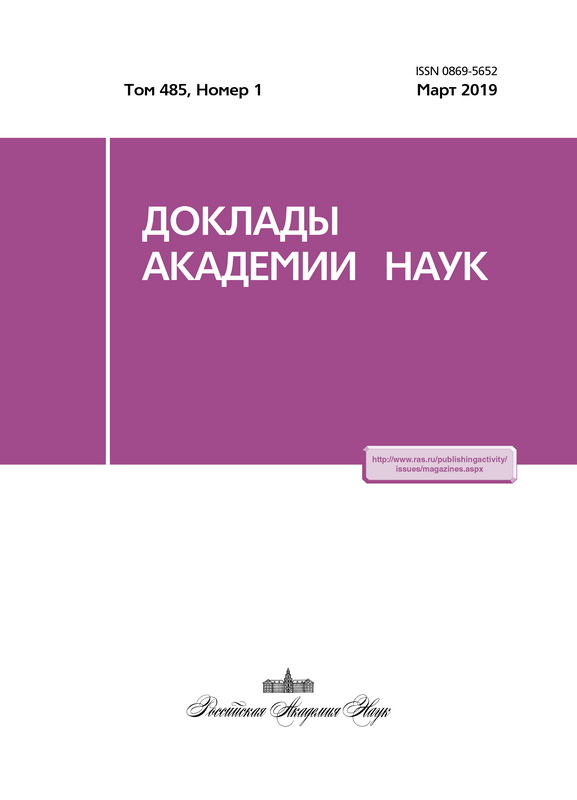Mechanisms of blood flow regulation of in the skin during stimulation of the spinal cord in humans
- Authors: Lobov G.I.1, Gerasimenko Y.P.1, Moshonkina T.R.1
-
Affiliations:
- Pavlov Institute of Physiology of the Russian Academy of Sciences
- Issue: Vol 485, No 1 (2019)
- Pages: 114-116
- Section: Physiology
- URL: https://journals.eco-vector.com/0869-5652/article/view/12917
- DOI: https://doi.org/10.31857/S0869-56524851114-116
- ID: 12917
Cite item
Abstract
Changes of the blood flow in the shin skin in the case of 12 healthy subjects by laser doppler flowmetry were observed under transcutaneous electrical spinal cord stimulation (TSCS) by subthreshold bipolar pulses with a frequency of 30 Hz were detected. It was found that the TSCS in the area of the vertebrae T11 and L1 leads to a significant increase in skin blood flow. With a stimulus intensity of 90% of the motor threshold, the microcirculation rate increased by more than 85% relative to baseline.The results of the study show that the stimulation of blood flow in the skin by TSCS is realized mainly due to the antidromic stimulation of sensory nerve fibers. An important mediator that contributes to vasodilation and increase of cutaneous blood flow in PSCS is nitric oxide (NO), which is predominantly endothelial in origin.
About the authors
G. I. Lobov
Pavlov Institute of Physiology of the Russian Academy of Sciences
Author for correspondence.
Email: gilobov@yandex.ru
Russian Federation, 6, Makarova street, St.Petersburg, 199034
Yu. P. Gerasimenko
Pavlov Institute of Physiology of the Russian Academy of Sciences
Email: gilobov@yandex.ru
Corressponding Member of the RAS
Russian Federation, 6, Makarova street, St.Petersburg, 199034T. R. Moshonkina
Pavlov Institute of Physiology of the Russian Academy of Sciences
Email: gilobov@yandex.ru
Russian Federation, 6, Makarova street, St.Petersburg, 199034
References
- Гришин А. А., Мошонкина Т. Р., Солопова И. А., Городничев Р. М., Герасименко Ю. П. // Мед. техника. 2016. № 5. С. 8-11.
- Крупаткин А. И., Сидоров В. В. Функциональная диагностика состояния микроциркуляторно-тка- невых систем. Руководство для врачей. М.: Либро- ком, 2013. 496 с.
- Лобов Г. И., Щербакова Н. А., Городничев Р. М., Гришин А. А., Герасименко Ю. П., Мошонкина Т. Р. // Физиология человека. 2017. Т. 43. № 5. С. 36-42.
- van Beek M., van Kleef M., Linderoth B., et al. // Eur. J. Pain. 2017. V. 21. № 5. Р. 795-803.
- Bernjak A., Cui J., Iwase S., et al. // J. Physiol. 2012. V. 590. № 2. Р. 363-375.
- Carter S. J., Hodges G. J. // Exp. Physiol. 2011. V. 96. № 11. Р. 1208-1217.
- Charkoudian N. // J. Appl. Physiol. 2010. V. 109. № 4. P. 1221-1228.
- Gerasimenko Y., Gorodnichev R., Moshonkina T., Say- enko D., Gad P. // Ann. Phys. Rehabil. Med. 2015. V. 58. № 4. P. 225-231.
- Gerasimenko Y., Gorodnichev R., Puhov A., Moshon- kina T., Savochin A., Selionov V., Roy R. R., Lu D. C., Edgerton V. R. // J. Neurophysiol. 2015. V. 113. № 3. P. 834-842.
- Harkema S., Gerasimenko Y., Hodes J., et al. // Lancet. 2011. V. 377. № 9781. Р. 1938-1947.
- Hodges G. J., Traeger J. A., Tang T., et al. // Amer. J. Physiol. Heart. Circ. Physiol. 2007. V. 293. № 1. P. 784-789.
- Naoum J. J., Arbid E. J. // Methodist Debakey Cardio- vasc. J. 2013. V. 9. № 2. Р. 99-102.
- Pedrini L., Magnoni F. // Interact. Cardiovasc. Thorac. Surg. 2007. V. 6. № 4. Р. 495-500.
- Sayenko D. G., Atkinson D. A., Floyd T. C., et al. // Neu- rosci Lett. 2015. V. 609. Р. 229-234.
- Wu M., Komori N., Qin C., et al. // Brain Res. 2007. V. 1156. Р. 80-92
Supplementary files







